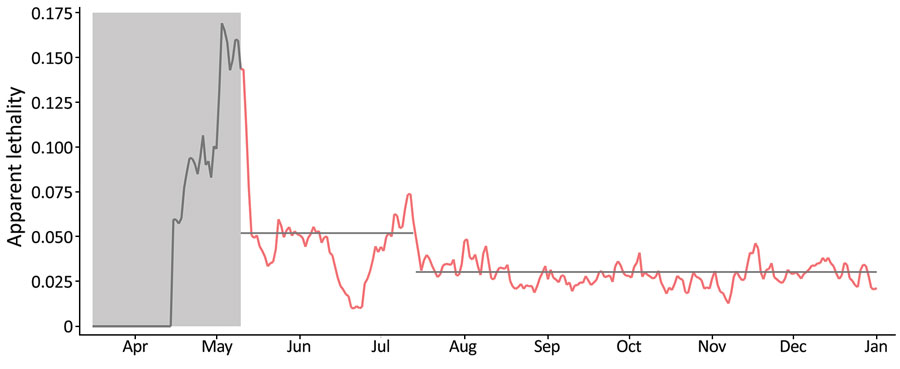Volume 28, Number 4—April 2022
Research
SARS-CoV-2 IgG Seroprevalence among Blood Donors as a Monitor of the COVID-19 Epidemic, Brazil
Figure 2

Figure 2. Apparent lethality of coronavirus disease (COVID-19) in 6 cities (Belo Horizonte, Pouso Alegre, Montes Claros, Juiz de Fora, Governador Valadares, and Uberaba), Minas Gerais State, Brazil, April–December 2020. Gray shading and gray data line indicate the beginning of the COVID-19 epidemic in Minas Gerais, days 1–60, in which few cases were reported and the testing infrastructure was still being organized. Red data line indicates days 61–290 of the epidemic. Our model predicted the apparent lethality during days 60–120 to be nearly 5.2% and to fall during days 121–290 to nearly 3.0% (gray horizontal lines). This change corresponds to a nearly 70% increase in the value of α in our model (proportion of infected persons that are reported), assuming that the actual lethality has not changed. We did not include data from the city of Uberlândia in this estimation due to local legislation regulating COVID-19 testing, which resulted in a much larger proportion of people being tested in that municipality than in the other cities. Markings for each month represent the first day of the month.
1These authors contributed equally to this article.